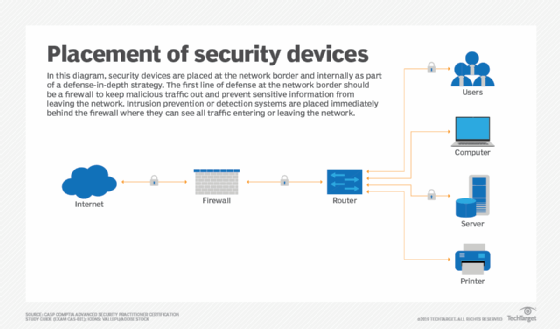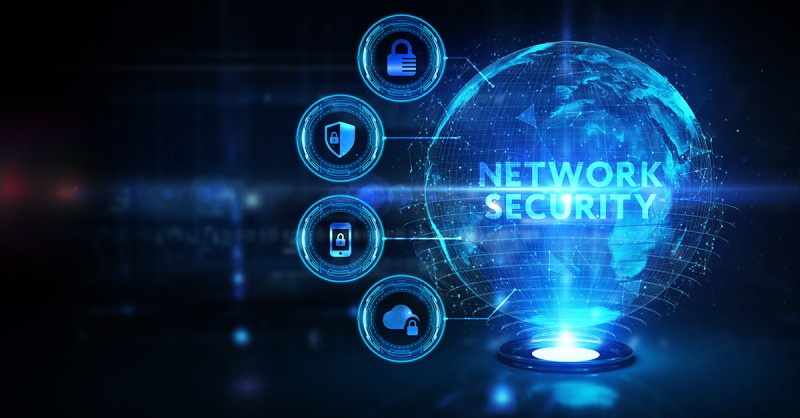FFT Perimeter Intrusion Solutions: Advanced Security for Your Premises
Wiki Article
Exactly How Data and Network Safety Safeguards Against Emerging Cyber Hazards
In a period noted by the quick development of cyber risks, the significance of data and network protection has never been more pronounced. Organizations are significantly reliant on sophisticated security actions such as encryption, accessibility controls, and aggressive surveillance to protect their electronic possessions. As these hazards become much more intricate, recognizing the interplay between information safety and security and network defenses is important for reducing risks. This conversation aims to discover the important components that strengthen a company's cybersecurity position and the strategies needed to stay in advance of potential susceptabilities. What remains to be seen, nonetheless, is exactly how these actions will advance when faced with future obstacles.Recognizing Cyber Risks

The ever-evolving nature of technology consistently introduces brand-new vulnerabilities, making it vital for stakeholders to continue to be vigilant. Individuals may unknowingly fall sufferer to social design techniques, where enemies control them into disclosing sensitive info. Organizations face special obstacles, as cybercriminals commonly target them to exploit useful information or interrupt procedures.
Moreover, the increase of the Web of Points (IoT) has broadened the assault surface area, as interconnected devices can act as entrance factors for assailants. Acknowledging the value of robust cybersecurity practices is vital for minimizing these risks. By fostering an extensive understanding of cyber companies, people and hazards can execute reliable strategies to safeguard their digital assets, guaranteeing resilience in the face of a progressively intricate hazard landscape.
Trick Elements of Information Protection
Making certain information security requires a multifaceted approach that encompasses numerous vital parts. One essential component is information security, which changes sensitive information right into an unreadable layout, easily accessible just to accredited individuals with the suitable decryption keys. This functions as a critical line of protection versus unauthorized gain access to.Another essential element is accessibility control, which regulates who can see or control data. By applying strict individual authentication methods and role-based gain access to controls, organizations can decrease the danger of insider hazards and data breaches.

In addition, information covering up strategies can be used to secure delicate info while still allowing for its use in non-production environments, such as screening and advancement. fft perimeter intrusion solutions.
Network Protection Approaches
Carrying out robust network safety and security techniques is important for safeguarding a company's digital infrastructure. These approaches entail a multi-layered technique that includes both equipment and software application services designed to shield the honesty, privacy, and availability of information.One vital component of network protection is the implementation of firewalls, which work as a barrier in between trusted inner networks and untrusted outside networks. Firewalls can be hardware-based, software-based, or a mix of both, and they help filter outward bound and incoming website traffic based on predefined protection policies.
Additionally, invasion discovery and prevention systems (IDPS) play an essential function in monitoring network web traffic for dubious activities. These systems can signal administrators to possible breaches and take activity to mitigate dangers in real-time. Regularly updating and covering software program is also vital, as vulnerabilities can be made use of by cybercriminals.
In addition, implementing Virtual Private Networks (VPNs) makes sure secure remote gain access to, securing data transferred over public networks. Last but not least, segmenting networks can reduce the attack surface and consist of possible breaches, limiting their effect on the general framework. By taking on these strategies, companies can successfully strengthen their networks versus arising cyber hazards.
Best Practices for Organizations
Establishing finest methods for companies is vital in keeping a solid protection posture. A comprehensive approach to data and network security starts with regular risk assessments to recognize susceptabilities and possible hazards. Organizations must carry out durable accessibility controls, making sure that only licensed personnel can access delicate information and systems. Multi-factor verification (MFA) ought to be a basic need to enhance security layers.
In addition, constant employee training and recognition programs are vital. Employees should be enlightened on recognizing phishing efforts, social engineering tactics, and the value of adhering to protection protocols. Regular updates and spot management for software program and systems are also essential to safeguard versus known susceptabilities.
Organizations need to establish and examine event feedback plans to make certain preparedness for possible violations. This includes establishing clear communication channels and functions throughout a protection incident. Additionally, information security must be used both at rest and en route to protect delicate information.
Last but not least, conducting periodic audits and compliance checks will assist ensure adherence to appropriate regulations and well established plans - fft perimeter click here to find out more intrusion solutions. By adhering to these best methods, companies can dramatically enhance their resilience against emerging cyber risks and secure their essential assets
Future Trends in Cybersecurity
As companies browse a significantly intricate electronic landscape, the future of cybersecurity is positioned to advance dramatically, driven by changing and arising innovations danger standards. One famous pattern is the combination of man-made knowledge (AI) and equipment understanding (ML) right into protection structures, enabling for real-time risk detection and response automation. These innovations can examine huge amounts of data to recognize abnormalities and prospective breaches more successfully than conventional techniques.Another critical fad is the increase of zero-trust architecture, which requires continual verification of individual identities and tool safety, no matter their location. This strategy reduces the risk of expert risks and enhances protection versus external strikes.
Additionally, the increasing fostering of cloud services demands robust cloud security approaches that deal with distinct vulnerabilities related to cloud settings. As remote work becomes a permanent fixture, safeguarding endpoints will additionally end up being extremely important, causing an elevated concentrate on endpoint detection and action (EDR) solutions.
Finally, regulatory compliance will certainly proceed to shape cybersecurity techniques, pushing organizations to take on more rigid information protection actions. Accepting these fads will be vital for companies to fortify their defenses and navigate the progressing landscape of cyber threats efficiently.
Verdict
In final thought, the application go to website of robust information and network safety steps is important for organizations to guard against emerging cyber dangers. By using encryption, accessibility control, and efficient network check out here safety and security strategies, companies can considerably reduce susceptabilities and shield delicate information.In a period marked by the quick development of cyber threats, the relevance of data and network protection has never ever been a lot more pronounced. As these dangers become a lot more complex, recognizing the interplay in between data security and network defenses is crucial for reducing threats. Cyber risks incorporate a wide variety of malicious activities intended at endangering the privacy, honesty, and availability of networks and information. An extensive strategy to data and network safety and security starts with regular danger analyses to identify vulnerabilities and possible hazards.In conclusion, the application of durable information and network safety and security steps is crucial for organizations to protect versus arising cyber threats.
Report this wiki page